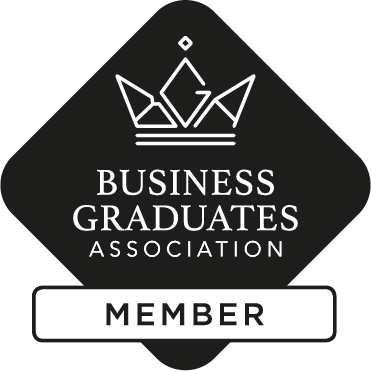University certificate
Scientific endorser

The world's largest faculty of journalism and communication”
Introduction to the Program
Communication professionals must continue their education to adapt to new developments in this field in a professional manner"

The teaching team of this Master's Degree MBA in Communication Company Management has made a careful selection of each of the topics of this program to offer the student a program as complete as possible which is always linked to current events.
As it is a Master’s Degree, students are not bound by fixed schedules or the need to move to another physical location, rather, they can access the content at any time of the day, balancing their professional or personal life with their academic life.
This Master's Degree provides students with specific tools and skills to successfully develop their professional career in the broad environment Communication Company Management. It focuses on key skills such as knowledge of the reality and daily practice in the media and develops responsibility in the monitoring and supervision of their work, as well as communication skills within the essential teamwork.
Don't miss the opportunity to study this Master's Degree, in MBA in Communication Company Management with us. It's the perfect opportunity to advance your career"
This MBA in Communication Company Management contains the most complete and up-to-date program on the market. The most important features include:
- Case studies presented by experts in Communication Company Management
- The graphic, schematic, and practical contents with which they are created, provide scientific and practical information on the disciplines that are essential for professional practice
- Practical exercises where the self-assessment process can be carried out to improve learning
- Special emphasis on innovative methodologies in Communication Company Management
- Theoretical lessons, questions to the expert, debate forums on controversial topics, and individual reflection assignments
- Content that is accessible from any fixed or portable device with an Internet connection
This Master’s Degree, is the best investment you can make in selecting a refresher program to update your knowledge in Communication Company Management”
The teaching staff includes professionals from the communication field who bring their experience to this educational program, as well as renowned specialists from leading societies and prestigious universities.
The multimedia content, developed with the latest educational technology, will provide the professional with situated and contextual learning, i.e., a simulated environment that will provide immersive education programmed to learn in real situations.
This program is designed around Problem-Based Learning, whereby the professional must try to solve the different professional practice situations that arise during the course. The professionals will be assisted by an innovative interactive video system created by renowned and experienced experts in Communication Company Management.
This program comes with the best educational material, providing you with a contextual approach that will facilitate your learning"

This 100% online Master's Degree will allow you to balance your studies with your professional work while increasing your knowledge in this field"
Why study at TECH?
TECH is the world’s largest online university. With an impressive catalog of more than 14,000 university programs available in 11 languages, it is positioned as a leader in employability, with a 99% job placement rate. In addition, it relies on an enormous faculty of more than 6,000 professors of the highest international renown.

Study at the world's largest online university and guarantee your professional success. The future starts at TECH”
The world’s best online university according to FORBES
The prestigious Forbes magazine, specialized in business and finance, has highlighted TECH as “the world's best online university” This is what they have recently stated in an article in their digital edition in which they echo the success story of this institution, “thanks to the academic offer it provides, the selection of its teaching staff, and an innovative learning method aimed at educating the professionals of the future”
A revolutionary study method, a cutting-edge faculty and a practical focus: the key to TECH's success.
The most complete study plans on the university scene
TECH offers the most complete study plans on the university scene, with syllabuses that cover fundamental concepts and, at the same time, the main scientific advances in their specific scientific areas. In addition, these programs are continuously being updated to guarantee students the academic vanguard and the most in-demand professional skills. In this way, the university's qualifications provide its graduates with a significant advantage to propel their careers to success.
TECH offers the most comprehensive and intensive study plans on the current university scene.
A world-class teaching staff
TECH's teaching staff is made up of more than 6,000 professors with the highest international recognition. Professors, researchers and top executives of multinational companies, including Isaiah Covington, performance coach of the Boston Celtics; Magda Romanska, principal investigator at Harvard MetaLAB; Ignacio Wistumba, chairman of the department of translational molecular pathology at MD Anderson Cancer Center; and D.W. Pine, creative director of TIME magazine, among others.
Internationally renowned experts, specialized in different branches of Health, Technology, Communication and Business, form part of the TECH faculty.
A unique learning method
TECH is the first university to use Relearning in all its programs. It is the best online learning methodology, accredited with international teaching quality certifications, provided by prestigious educational agencies. In addition, this disruptive educational model is complemented with the “Case Method”, thereby setting up a unique online teaching strategy. Innovative teaching resources are also implemented, including detailed videos, infographics and interactive summaries.
TECH combines Relearning and the Case Method in all its university programs to guarantee excellent theoretical and practical learning, studying whenever and wherever you want.
The world's largest online university
TECH is the world’s largest online university. We are the largest educational institution, with the best and widest online educational catalog, one hundred percent online and covering the vast majority of areas of knowledge. We offer a large selection of our own degrees and accredited online undergraduate and postgraduate degrees. In total, more than 14,000 university degrees, in eleven different languages, make us the largest educational largest in the world.
TECH has the world's most extensive catalog of academic and official programs, available in more than 11 languages.
Google Premier Partner
The American technology giant has awarded TECH the Google Google Premier Partner badge. This award, which is only available to 3% of the world's companies, highlights the efficient, flexible and tailored experience that this university provides to students. The recognition as a Google Premier Partner not only accredits the maximum rigor, performance and investment in TECH's digital infrastructures, but also places this university as one of the world's leading technology companies.
Google has positioned TECH in the top 3% of the world's most important technology companies by awarding it its Google Premier Partner badge.
The official online university of the NBA
TECH is the official online university of the NBA. Thanks to our agreement with the biggest league in basketball, we offer our students exclusive university programs, as well as a wide variety of educational resources focused on the business of the league and other areas of the sports industry. Each program is made up of a uniquely designed syllabus and features exceptional guest hosts: professionals with a distinguished sports background who will offer their expertise on the most relevant topics.
TECH has been selected by the NBA, the world's top basketball league, as its official online university.
The top-rated university by its students
Students have positioned TECH as the world's top-rated university on the main review websites, with a highest rating of 4.9 out of 5, obtained from more than 1,000 reviews. These results consolidate TECH as the benchmark university institution at an international level, reflecting the excellence and positive impact of its educational model.” reflecting the excellence and positive impact of its educational model.”
TECH is the world’s top-rated university by its students.
Leaders in employability
TECH has managed to become the leading university in employability. 99% of its students obtain jobs in the academic field they have studied, within one year of completing any of the university's programs. A similar number achieve immediate career enhancement. All this thanks to a study methodology that bases its effectiveness on the acquisition of practical skills, which are absolutely necessary for professional development.
99% of TECH graduates find a job within a year of completing their studies.
Master's Degree in MBA in Communication Business Management
.
To properly manage an agency or company that is responsible for the execution of actions aimed at positioning communication processes, it is essential to have a series of specialized knowledge in the planning and implementation of corporate, technological, competitive, marketing and sales strategies. For this reason, at TECH Global University we have created this program focused on this subject, with which professionals will be able to build development plans, where the ways to detect, analyze and solve the obstacles that prevent the establishment of the link between customers and the company are stipulated. Thanks to our complete study program, it will be possible to delve into market environments, organization and leadership, management of the information product through analog or digital media, and marketing research. With the knowledge gained during the 12 months of this theoretical and practical course, our students will be able to acquire and refine managerial skills in order to increase and constantly improve their company's reputation.
Study our Master's Degree in Communication Management
.
This TECH postgraduate degree is an important opportunity to master everything related to the management of business broadcast channels, from the key tools to create corporate identity, to the implementation of innovation processes in the portfolio of information products, through the management of microenvironments and macroenvironments. Through our methodology and problem-based learning, professionals will be able to prepare themselves to face all kinds of situations, which will allow them to adapt to moments of crisis, foreseeing the failures and inconveniences that come with the exercise of their work. Based on these skills, each one will be able to design organizational plans and creative protocols of communicative structuring that make use of the different media and supports available for the promotion of the interactive flow. In this way, the graduate of the master's degree, future expert in this field, will be characterized by his excellent performance in managerial functions, ensuring that each of the departments that make up the company is strengthened, which will consolidate the business processes of dissemination and build loyalty among the audiences
.







